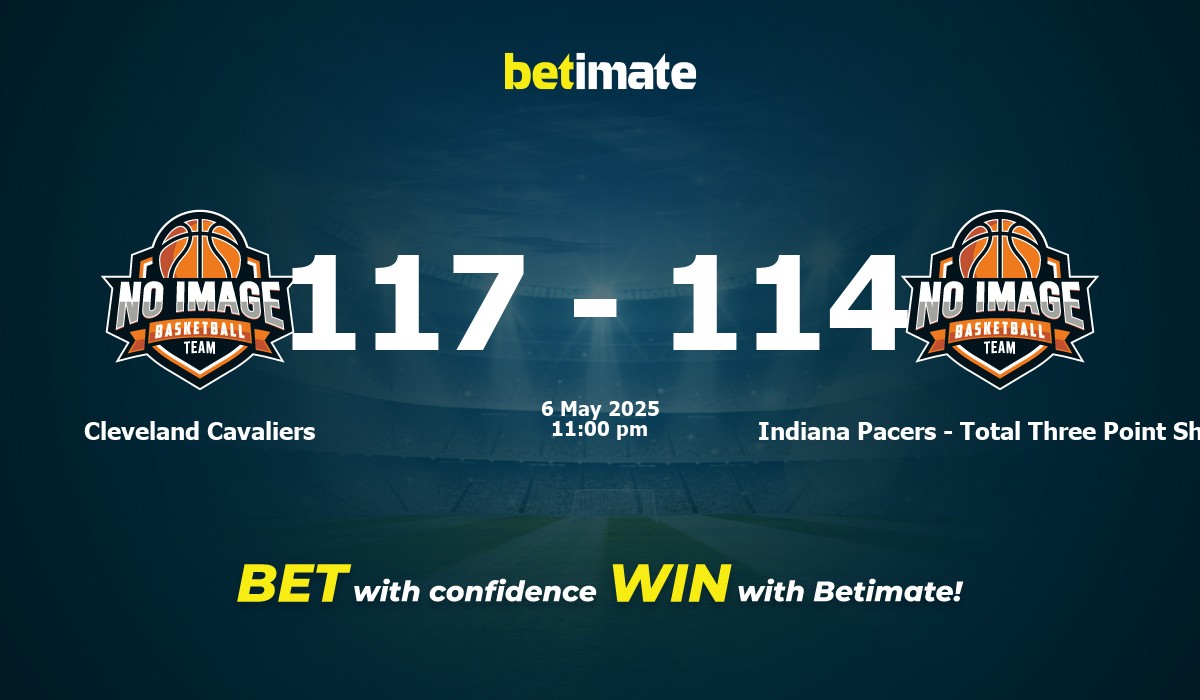Quick Betimate
Popular Leagues
Other Leagues
Cavaliers' Darius Garland (Toe) Ruled Out for Game 1 vs. Pacers


Darius Garland’s absence loomed large for the Cleveland Cavaliers during Game 1 of their Eastern Conference semifinal against the Indiana Pacers. As a seasoned sports analyst with years of covering NBA playoffs, it's clear that his injury and subsequent sidelining significantly impacted the team's lineup and strategy.
Darius Garland’s Injury Status Ahead of the Semifinals
Prior to tip-off, the Cavaliers confirmed that Darius Garland would miss the series opener due to a sprained left big toe. This same injury caused Garland to sit out the final two contests of the regular season, as well as the last two games of Cleveland’s first-round sweep of the Miami Heat. His unavailability became a focal point, raising concerns about the Cavaliers’ backcourt fortitude against a determined Pacers squad.
Details and Timeline of the Injury
Garland sustained his toe injury late in the regular season, which limited his participation just as the Cavaliers were building postseason momentum. Despite attending a full-contact practice session on Friday, Garland’s condition did not improve enough for him to participate on Saturday, leading to his exclusion from Game 1’s lineup. Coach Kenny Atkinson clarified that Garland's chances for subsequent games would likely be evaluated on a day-to-day basis, emphasizing the unpredictable recovery trajectory for toe injuries among basketball players.
- Missed last two regular season games and two playoff games vs. Miami Heat
- Did not participate in practice the day before the semifinal opener
- Listed as game-time decision moving forward
Coach’s Perspective and Player Resilience
Coach Atkinson expressed empathy about Garland’s situation, acknowledging both the pain and the mental challenge involved in managing such an injury during the playoffs. He remarked, “The toe’s a tough one. There’s pain and all that. But the good thing, when we watch him shooting right now, he’s moving well.” From a coaching standpoint, it’s essential to consider both physical capability and risk of aggravating the injury further.
This situation reflects what many experienced players and coaches already know: toe injuries may appear benign but can severely affect an elite athlete’s explosiveness and court mobility. Observations from practice sessions indicated that while Garland was able to shoot comfortably, full-speed lateral movement and quick changes of direction—core skills for an NBA guard—are more demanding on an injured toe.
Season Performance and Value to the Team
Throughout the regular season, Garland was pivotal for Cleveland, averaging 20.6 points and 6.7 assists per game. His ability to break down defenses, distribute the basketball, and create scoring opportunities distinguishes him as one of the team’s primary offensive catalysts. In Game 1 against Miami, Garland notched 27 points, underpinning his value in high-stakes environments. His absence, therefore, puts pressure on both coaches and teammates to compensate for lost production and leadership.
Adjustments in Garland’s Absence
With Garland out, Sam Merrill stepped into the starting guard role for the third consecutive playoff game. Strategic substitutions and elevated expectations for other backcourt players immediately followed. This change tests Cleveland's roster depth and places greater importance on ball movement and perimeter defense from the remaining guards.
Potential Longer-Term Impact
According to Atkinson, Garland will likely have to manage discomfort for the duration of the playoffs. This reality requires ongoing evaluation and adjustments in game planning. The team must carefully balance immediate results with Garland’s overall health, as returning too soon could risk worsening the injury and jeopardizing both individual and team goals.
Expert Insights on Playoff Dynamics Without Garland
Drawing on years of analysis for Betimate, it’s evident that the absence of a core playmaker forces a franchise to recalibrate its approach rapidly. Success in the playoffs hinges on adaptability and resilience; teams must generate offense from alternative sources and sustain defensive intensity. The Cavaliers, despite possessing quality depth, will need to foster cohesion among secondary ball handlers to keep their postseason ambitions alive.
- Secondary scorers must step up to fill the scoring void
- Coaching staff must develop game plans that emphasize team defense
Looking Ahead: What to Expect for Garland and the Cavaliers
Given the uncertainties tied to toe injuries—especially for a position as demanding as point guard—Cleveland faces a difficult path. Recovery protocols commonly involve rest, ongoing pain management, and careful minute monitoring once the player returns. If Garland returns later in the series, expect his performance to be monitored closely, with potential limitations on minutes or changes in his role depending on his pain tolerance and functional ability.
Ultimately, the Cavaliers must navigate not only the formidable challenge posed by Indiana but also the internal adversity of missing their All-Star guard. Such situations underscore the unpredictability and drama of the NBA playoffs, where roster flexibility and mental resilience frequently decide a series' outcome.
Related Content




























